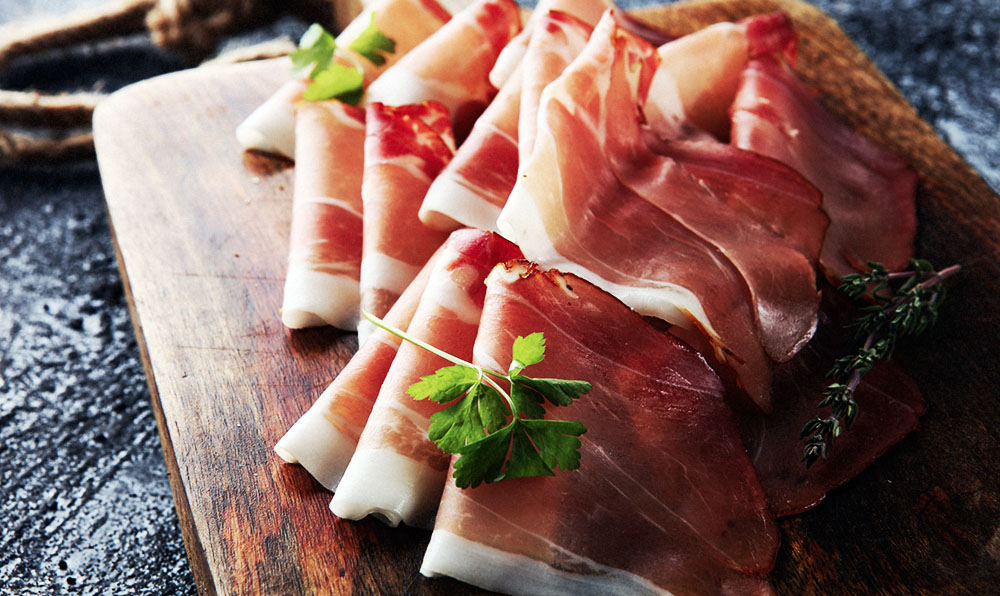Prosciutto is thine name

Pretend you’re the owner of the prestigious Château Fantastique in Bordeaux. Your wine is coveted and in demand around the world. Restaurants line up for it. The critics love it (they score it 95 points…and actually mean it). Yet in Canada – and only Canada – you can’t sell your wine as Château Fantastique. Nope. You have to sell it as Bordeaux (or, “that really good Bordeaux…you know, that one!”). Why? Because another Canadian company had trademarked the term “Château Fantastique.” It effectively owns the name. Your name. Could never happen? Well, welcome to another instalment of “The Truth is Stranger Than Fiction” show. And welcome to the quandary that had, until recently, blocked Prosciutto di Parma, as well as Prosciutto di San Daniele, from marketing themselves under their own names.
Most who are reading this are familiar with prosciutto, the cured, aged ham that is usually sliced paper thin and savoured on its own, or just minimally accompanied. Those who are a bit more “foodie” will know that “authentic” prosciutto comes from Italy. What neither camps may not know is that there are only two regions in Italy recognized by law under the Protected Destination of Origin (PDO) as unique prosciutto producing places: the area around the city of Parma in the northern province of Emilia-Romagna, and the area around San Daniele, a commune further to the northeast in the Friuli-Venezia Giulia region.
Though it’s a bit tough to wrap your head around (unless you happen to be a trademark lawyer), both the terms “Parma” and “San Daniele” had been trademarked by Canadian meat processing firms, effectively making it illegal for the real thing to be called the real thing. Prociutto di Parma, for example, had little choice but to label itself as “The Original Prosciutto.” However, under the terms of the Comprehensive Economic and Trade Agreement (CETA), between Canada and Europe, European PDOs are now recognized and Prosciutto di Parma can be called what it really should be called. Ditto for San Daniele.
This resolution was a longtime coming, with legal battles between the respective prosciutto consortiums and Canadian companies going back decades. In any case, the letter of international law (or maybe just common sense) has prevailed, and now, in Canada, identifying these superior products will be that much easier for consumers.
So what’s all the fuss about anyway? What makes these two PDO hams so special? The technical people will cite delimited production areas, traceability throughout the production process, strict quality controls, production methods and ageing requirements, and so on. The main thing to remember is that these hams are all-natural. Pork, salt, air and time are the only ingredients permitted (and yes, air and time are every bit as important as the meat and salt). Of course, you eat the stuff, so taste should be your main reason for purchasing authentic prosciutto.
At a recent seminar and lunch in Toronto I was able to compare the merits of Prosciutto di Parma and Prosciuto di San Daniele side-by-side. San Daniele came off as slightly more delicate, a bit more buttery, and perhaps a tad less salty. Prosciutto di Parma was perhaps a bit more assertive, a tad “meatier” and richer in texture. I wouldn’t say no to a few good slices of either. Speaking of slicing, make sure you slice these hams paper thin (you should actually be able to see through a slice). Make sure they are served at room temperature, and for God’ssake do not trim off all the fat. What’s been left on has been left for a reason (flavour being the reason).
